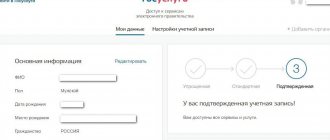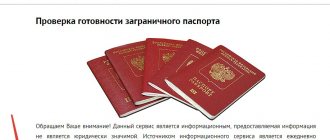Features of a national visa
Any adult knows what a national visa is. This is an official permit to enter the country, which is issued only if the applicant has provided a certain package of documents and paid the visa fee. Having received a stamp in your passport with mark D, you can stay in the country for the entire duration of the visa corridor.
This type is often called long-term, since it is issued not for three months in a half-year, but for 180 days. Thanks to this stamp, you will be able to cross the border an unlimited number of times.
What you need to get a visa:
- have a foreign passport;
- create a package of documents at the request of the embassy of the country where you are going to travel;
- purchase an insurance policy and pay the fee;
- undergo a personal interview.
Many people are interested in whether they will give a visa if they have debts. If you are on the Border Patrol's list as a person prohibited from leaving the country, then no. You can be included in such lists if you owe more than 10 thousand rubles.
Even if you are given permission to leave, you will still not be allowed to board the flight, so you need to pay off all fines and other debts at least a month before the trip so that the border guards’ database can be updated.
Necessary documents for registration
To obtain a passport with mark D, you will need to create a package of certificates, copies, photographs and other documents. The list of required papers depends on the type of permit: study, work, for treatment, in connection with the reunification of relatives, business emigration. Basically, D is issued by those who expect to live in a European country not during the holiday period, but for a long time, taking into account the possibility of extending the stamp without leaving Europe.
Documents for a national visa:
- questionnaire;
- international passport;
- certificate from work or account statement;
- insurance;
- rental agreement, purchase of housing in an EU country;
- certificate of no problems with the law;
- medical certificate of the established form;
- work permit and employment contract (if a work D is issued);
- certificate, confirmation of admission to a European university and payment for the first semester (if student D is required);
- confirmation of regular receipts to the account in the amount of at least 700 euros (for financially independent persons who plan to live on their remote income);
- agreement with the clinic, certificate of diagnosis, confirmation of payment (for treatment D);
- confirmation of family ties with an EU citizen or with a residence permit (if family reunification);
- all documents for the business (founding papers, business plan, confirmation of financial investments - if a business visa is issued).
The application form for obtaining a national visa contains information about the address, passport number, purpose of the visit, marital status, citizenship, and financial guarantees. You must sign this document in person, even if you filled out the form on a computer.
D implies a completely different approach to assessing the solvency of the applicant. Unlike holders of short-term entry permits, he must have documented income (rent, pension, profits from business in Russia) or an already signed employment contract with a European company or plans to open a business in the country.
Many EU countries put forward their own requirements for the amount of initial capital for a business and the level of wages for a European employer. On average, entrepreneurs need to stock up on at least 5-20 thousand euros, and those who get a job need to show in the contract an income amount of at least 500-1200 euros per month.
What is a Schengen visa
If you don't know what a Schengen visa means, the answer can be found in the EU Visa Code. Unlike national D, it is shorter and is issued mainly for tourism and guest visits. You have the right to order a single, double, or multiple stamp, which will allow you to freely cross the border in both directions.
Why the Schengen visa is called that way, we think, is easy to guess: it gives access to all countries of the Schengen zone, which includes 26 European countries. Having received Schengen, for example, in France, you can stay in any European country for the period allotted to you. It is desirable that the first entry be through the French border, but this requirement is not strict.
If you are wondering how to get a Schengen visa in 2021, then contact the embassy of the country you have chosen to visit. The list of documents is almost identical to what is submitted when applying for a D visa. The exception is certificates of criminal record and health, which are simply not required for short-term visas. Naturally, if you are going on a trip, then in addition to the application form, insurance, passport and income certificate, you need to provide a travel voucher or hotel and air ticket reservation. For guest voyages, an invitation from relatives is required (you can mention their willingness to bear the expenses themselves), as well as confirmation of their income, citizenship or residence permit in the EU and your family ties.
General rules for obtaining an entry permit
Despite significant differences in the issuance of visas to different countries of the world, there are some general rules and conditions for obtaining them. As an example, consider obtaining a Schengen visa to visit the European Union. Firstly, it is most in demand and is most often issued in Russia, and secondly, it is when applying for a Schengen visa that one can see almost all stages of the process.
To obtain a visa, you should contact the representative office of the state you are planning to visit. This could be an embassy, consulate or visa center. Next, you should submit a package of documents along with your visa application. Some diplomatic missions will require you to make an appointment in advance or submit an application online.
If on the territory of the Russian Federation a citizen of another CIS republic applies for a Schengen visa, then he will need a temporary residence permit, residence permit or other migration documents.
When contacting a diplomatic mission of a European state, you must go through three stages:
- submit an application and documents;
- pass an interview;
- submit biometric data;
- receive a passport with a visa on time.
Video about obtaining a Schengen visa and filling out the application form
Submitting an application and documents
If there is no prior appointment at the diplomatic mission, you can simply visit it during business hours and submit an application and documents for a Schengen visa. If there is a record, then the established rules should be followed.
The list of basic documents for obtaining Schengen includes:
- application form (the form can be filled out online and printed or downloaded from the embassy or consulate website);
- two photographs 3.5 x 4.5 cm;
- a foreign passport and a copy of the page containing personal information about the applicant. The passport must be valid for at least three months from the date of expiration of the requested visa;
- health insurance policy with coverage of at least thirty thousand euros. The insurance must be valid for the entire intended period of validity of the Schengen visa received. You can apply for it at any insurance company;
- confirmation of the availability of sufficient funds that should presumably cover the entire expenditure portion of the travel budget. Confirmation can be: a bank statement indicating the availability of funds in the account;
- a credit card statement showing the balance on it;
- traveler's checks;
- certificate from work about the amount of salary;
- certificate 2-NDFL for self-employed;
- a sponsorship letter of guarantee from the host party, in which the inviting individual or organization undertakes to cover all expenses of the guest during his stay;
Documents for a Schengen visa can be submitted in Russian. If a visa is needed for a long-term stay, they must be translated into the language of the host country. The translation is certified by a notary.
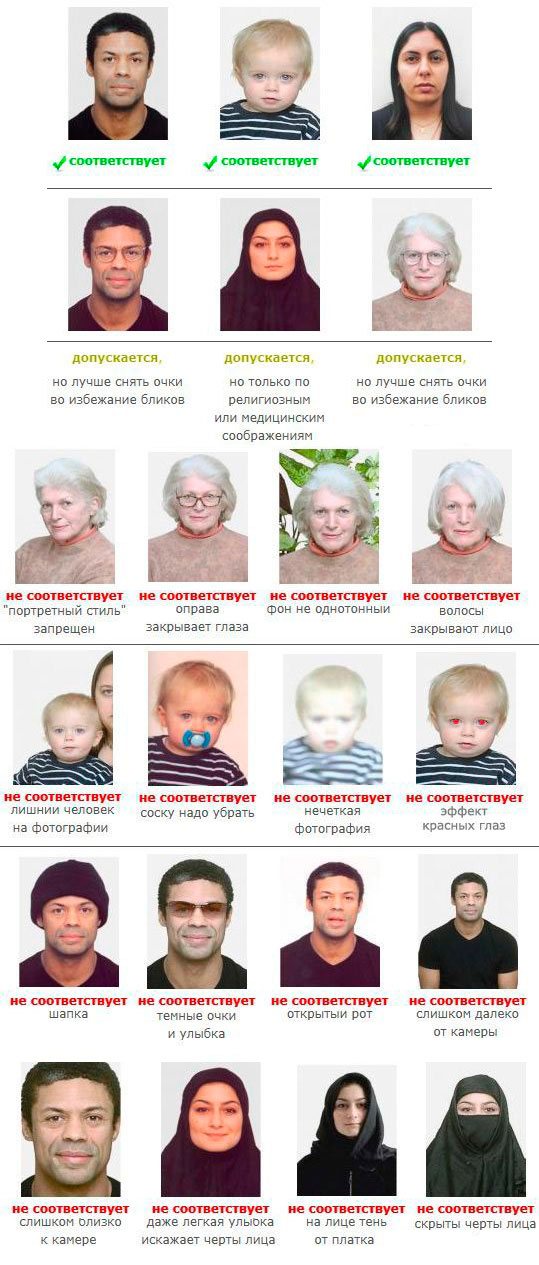
Photos for visa must meet international requirements
The photograph must be “fresh”, that is, taken no later than six months before submitting documents for a visa. Glasses in the photo are allowed only for medical reasons, and hats are allowed for religious reasons. The face of the person being photographed must occupy at least ¾ of the entire area. The mouth should be closed, and you should not smile widely. The photograph is taken on high quality photo paper on a white or light blue background. The photograph must not be damaged or digitally processed.
Each European state at the legislative level sets its own average daily minimum for visiting foreign guests. For example, in Latvia for one adult it is only 14 euros, but in France you will have to reserve 130 euros per day. This amount is multiplied by the number of days of stay in the country. As a rule, half of this amount is provided for one minor.
The form is filled out in Russian in Latin transcription block letters. For example, the address should look like this: Moskva, ul. Stroitelej. The information in the application form must strictly correspond to the data in the international passport. Those born before 1991 indicate the USSR as their country of birth. It is also necessary to write the new and old names of settlements if they were renamed during the life of the applicant.
Biometrics and interview
When receiving a Schengen visa, you will need to provide biometric data. This procedure involves taking fingerprints. It does not need to be completed every time you receive a visa, but once every 5 years. Children under 12 years of age are exempt from submitting fingerprints. From 12 to 16 they are taken in the presence of parents and with their written consent. The data is entered into the unified information system of the European Union regarding immigration. Holders of biometric passports who are citizens of Ukraine, Moldova and Georgia do not need to submit fingerprints.
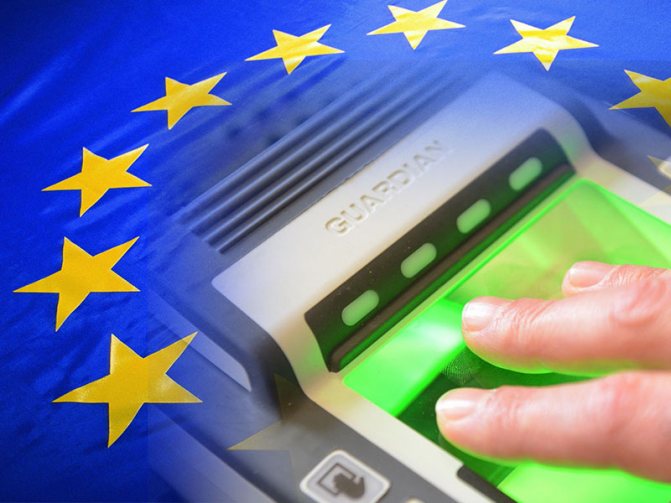
When obtaining a Schengen visa, you must provide biometric data
Also, one of the procedures when applying for a visa is an interview with employees of the diplomatic mission. It is not always assigned, most often when applying for a long-term or multiple-entry visa. The applicant is informed about the date and time in advance. The purpose of the interview is to find out the reason for visiting the European Union, as well as to compare the data available in the documents with the answers of the interviewee.
Processing times and costs
The diplomatic mission of each individual country independently sets the maximum period for obtaining a visa. Much depends on its category, the workload of the diplomatic mission staff, as well as many other factors. On average, the visa processing time ranges from one working week to one and a half months. If we talk about a Schengen visa, it takes about one week to issue.
When submitting documents (or even before) you must pay a consular fee. The cost of a Schengen visa for Russian citizens is 35 euros. At visa centers, an additional service fee is charged; its size can start from 20 and reach 250 euros or more. Expedited processing of an entry permit, which usually takes three days, will cost the applicant twice as much.
Payment is usually made on the spot in euros or dollars, as well as in the national currency of the applicant’s country at the current exchange rate.
As a rule, in case of refusal to issue an entry permit, the consular fee is not refunded to the applicant. It is considered a fee for processing documents and not for issuing a visa.
Video on how to obtain a Schengen entry document yourself
Features of receipt for children and pensioners
There is no uniform requirement for all countries to have a personal foreign passport for traveling children. The child can either have his own document or be included in the passport of one of the parents with whom he is traveling. When submitting documents, you will need a birth certificate if you have not yet received a passport.
No problems arise if minors travel abroad with their father and mother. But in the case when the child travels with only one of them, the second must give his permission for him to travel outside the homeland. Consent must be notarized. If the second parent has died, is in prison, has been deprived of parental rights, or has been declared incompetent by a court (missing, deceased, etc.), then the appropriate documents will be required. They should be attached to the main package of documents submitted for a visa, and should be taken with you when crossing the border.
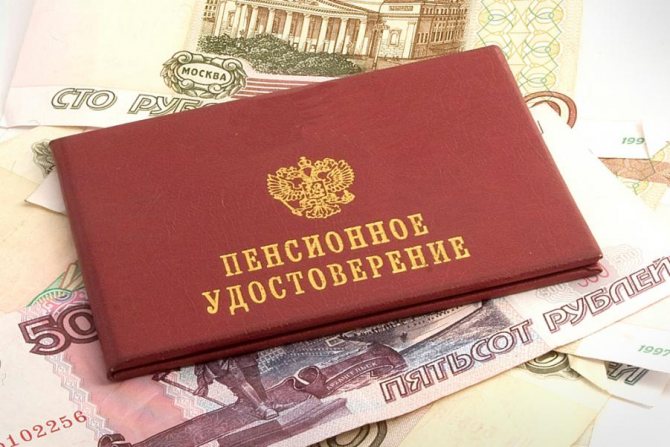
When traveling abroad, pensioners will need a pension certificate and a certificate from the Pension Fund about the amount of pension
When applying for a visa, pensioners are usually required to present the original and a copy of the pension certificate and a certificate issued in such cases by the pension fund. This document must contain information about the amount of pension benefits. If it turns out to be insufficient, you must prove the availability of additional funds for living in the host country.
Main differences between documents
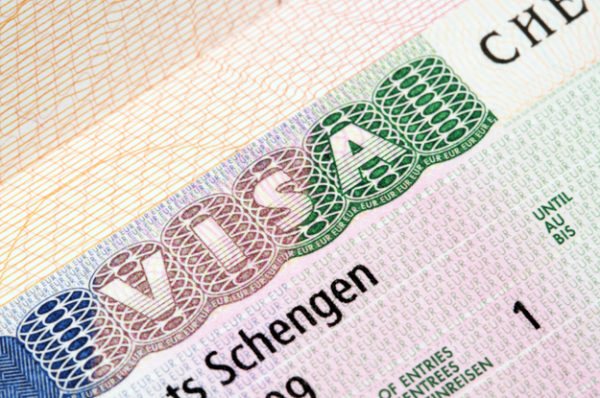
The differences between Schengen and national visas are significant. Firstly, you will need a more extensive package of documents for registration D. It is not so easy to do: you need to rent a home abroad or purchase it, confirm your serious and regular monthly income. All this is not required for a regular Schengen visa for a trip, for example, for a week's holiday in Greece or Italy. Secondly, there are different processing times - documents for long-term visas are studied especially carefully, sometimes the package can take up to 2-3 months to be processed.
What is the difference between Schengen and national visa:
- different lengths of stay (for a D visa they are 2 times longer);
- difference in opportunities (on a D visa you will be able to study and work if you receive the appropriate permission);
- in the consequences (visa D can be transformed over time into a residence permit, and then into permanent residence, citizenship).
With a D visa, you can safely travel to other countries in the Schengen area (the rule has been in effect since 2010). Thus, when applying for a visa, you do not limit yourself in anything. The only thing is that if you have a work visa, you will only be able to work in the country and in the company specified in the permit.
Only citizens of European countries have the right to work in any European country. The same applies, for example, to a student visa. If you decide to transfer to a university in another EU country, you will have to apply for a visa again.
Territory of coverage
Previously, national visas were issued only for visiting one country; others could be entered only in transit, for a period of up to 5 days. Now, if you have a D visa, you can visit other European countries. The only thing is that you will not be able to stay in them for more than three months (Schengen period).
Benefits of a Schengen visa:
- the opportunity to travel throughout Europe;
- low consular fee (average 30-35 euros);
- cheaper insurance;
- financial solvency requirements are lower than in the case of a national visa.
If you are planning to travel to EU countries, then you won’t find a better option than a regular Schengen card. For study, work, meetings with relatives and future emigration plans, it is better to apply for D. On the eve of its completion, you can come to the local migration service and, having provided a package of documents, receive a new stamp in your passport for the same period. A resident card with a residence permit is issued by the police after studying your history.
Duration of stay

As we said above, a national visa category D is issued for a period of up to 180 days with the possibility of extension and multiple entries and exits. The entry corridor is six months. Schengen, as you know, even with multiple permits allows a period of stay of no more than three months.
To figure out how the days of stay on a Schengen visa are calculated, you can use the calculator on the websites of embassies and visa centers. Specific travel dates are entered into it and thanks to this the remaining days during which you can still stay in the Schengen zone are calculated.
Receipt procedure
The main difference between a national visa and a Schengen visa is that you will have to spend more time and effort on obtaining it. You will have to obtain a certificate of no criminal record (can be ordered on the State Services portal). It is issued only to adults with a passport.
You will also need to confirm your income for 6 months of stay in the EU. For this purpose, a certificate of the amount in the account, traveler's checks or a certificate of currency purchase are suitable. It would be ideal if you can show account movements for the last year, where it will be clear that your income is regular and large. Both visa options are issued at the visa center or visa departments of consulates.
Obtaining a visa to Europe for travelers does not require any difficulties, unless, of course, we are talking about a multi-option that involves traveling for 3-5 years. In this case, you will have to prove the fact of frequent visits to European countries in the past and your financial receipts to the account.
What is the difference between a national visa and a Schengen visa in 2021
Russians often visit European countries. To enter any state, an appropriate official permit is required. People have many questions about the process of applying for a visa and collecting the necessary documents. People most often ask how a Schengen visa differs from a regular one? Let's try to figure this out.
Features of a national visa
Many people know what a national visa is. It is understood as an official pass to visit a certain country, which can be obtained after providing a complete package of documents. Each state has its own national visa, valid only in a specific territory.
This type of permit allows you to stay in the country for a long period. But to obtain it you must have a specific purpose for the trip.
Possible reasons:
- studying at a foreign university;
- employment;
- long business trip;
- participation in sports competitions or events;
- meeting with relatives.
A prerequisite is documentary evidence of the basis for entry into the country and the presence of an official invitation from the receiving party.
The purpose of the visit, in particular, may be:
- a letter from relatives indicating the reason;
- a call from an educational institution confirming the enrollment of a foreign student;
- an official letter from a European company confirming employment.
In each specific case, a specific type of entry permit is issued. The national document makes it possible to obtain a residence permit.
This document is a long-term permit. Its validity period is 180 days. During this period, a person can visit the country an unlimited number of times or stay on its territory.
Also, a national permit allows you to visit Schengen countries. But provided that the period of stay in them does not exceed 90 days every six months and entry is carried out from the state to which the permit was received.
Necessary documents for registration
The visa process requires certain steps. The registration procedure is the same for different European countries.
What you need to get a visa:
- presence of a foreign passport;
- a set of established documents;
- fact of payment of the service tariff;
- health insurance policy;
- personal interview.
Detailed information on how to obtain a visa to a particular European country can be found on the website of the embassy or consulate of the relevant state. The main difference lies in the set of documents provided; some countries may require additional information.
Documents for obtaining a national visa:
- identification;
- international passport;
- photographs 35x45 mm in the amount of 4 pieces;
- questionnaire;
- medical insurance in the amount of at least 30 thousand euros;
- documents confirming the purpose of the trip;
- receipt for payment of the service tariff;
- document confirming financial status.
An important point is to fill out the application form, which contains all the necessary information to obtain a national visa. The form can be downloaded from the official website or obtained from the embassy or consulate of the country.
The form must be filled out in block letters and corrections are not permitted. The registration period may take up to 3 months after submitting the full package of documents.
Schengen visa
Now let's figure out what a Schengen visa means. This permit is of a tourist type. It allows you to easily visit not only European countries, but also other states that allow entry under this document. The purposes of obtaining a visa may include tourism, work, or a business trip.
Many people guess why the Schengen visa is called that. In 1985, in the Luxembourg city of Schengen, an agreement was signed between 26 countries on the abolition of the border crossing regime. This agreement came into force in 1995.
Visas are divided into the following types:
- single entry – they give permission for only one entry into the Schengen countries;
- double entry – designed for double visits;
- multiple - do not limit the number of visits during the validity period of the document, the only limit is the duration of one stay within 90 days.
The maximum validity period for a Schengen visa is 5 years.
A special condition is that a Schengen visa for children must be issued for each child. The issuance process is similar to obtaining a visa for an adult and requires filling out an application and submitting the necessary documents.
Receipt procedure
The process of obtaining a Schengen visa to Europe for all travelers has its own characteristics. Under the new conditions, biometric visas are issued; this requires the personal presence of the applicant to obtain data.
Otherwise, the procedure for obtaining a Schengen visa is similar to other types of entry permits. It consists of collecting and providing a package of documents, filling out an application and paying a service fee.
The set of papers is almost the same as when applying for a national visa. Depending on the purpose of the visit and the name of the country, additional information may be required.
If the purpose of the trip is tourism, you will need to provide a voucher, round-trip tickets or hotel reservation.
A prerequisite for obtaining a Schengen visa is financial security. To confirm your income you need:
- information about income from the place of work;
- bank account certificate for visa;
- information on income from the tax office (for individual entrepreneurs);
- certificate from the Pension Fund of the Russian Federation (for pensioners);
- sponsorship letter with a copy of the sponsor's ID and income certificate attached.
An important question is how many days it takes to get a visa. Representative offices of different countries set their own deadlines for reviewing documents. On average, this process takes from 5 to 10 days after submitting an application and providing a package of documents.
The urgent procedure for considering an application requires issuing it within 3 days with an additional payment. It should also be taken into account that institutions are closed on weekends and holidays.
Main differences between documents
The two types of entry permits have significant differences. Before registration, you should carefully study them and choose the most suitable option for a particular type of trip.
What is the difference between a Schengen and a national visa?
- Term. National gives the right to stay in the country for a long time for various purposes.
- Decor. Schengen is issued faster and requires a smaller set of certificates.
- Possibilities. The national one provides the opportunity to study, work, and subsequently obtain a residence permit.
- A national visa provides expanded opportunities only in the country where it is issued.
Many CIS citizens live in Russia. To travel to European countries, they also need to obtain an appropriate pass. A Schengen visa for CIS citizens can be issued in Russia, but this applies to non-standard situations. In this case, the CIS citizen needs to prove the legality of his stay on the territory of the Russian Federation.
By understanding exactly what the differences are in the issuance and validity of a national visa from a Schengen visa, you can avoid many difficulties.
Territory of coverage
In terms of the tourist purpose of the trip, the advantages of a Schengen visa will be obvious. After issuing a pass to one Schengen country, you automatically have the opportunity to freely enter all other states of the union until the expiration of the pass.
A national visa allows you to visit Schengen countries for 90 days. At this time, the tourist can only stay in the country where the visa was issued.
Duration of stay
In terms of length of stay, a national visa of category D has an advantage. It allows you to stay in the selected country for the entire period of validity of the permit. If necessary, the period can be extended by submitting official evidence to extend the permit.
A Schengen visa allows you to visit any country only for 90 days every six months.
Obtaining a work visa
Particular attention is paid to obtaining a work visa. Tourists entering with this type of permit are subject to more stringent requirements. This is due to the fact that if the term of the employment contract is increased, there is a basis for its extension.
When staying in a European country for more than 5 years, a citizen has the opportunity to obtain a residence permit. Such a request may be granted if there are no problems with law enforcement agencies.
To whom is it issued?
A work permit is issued to all citizens who provide official proof of employment in a European country. In addition, this type of visa is issued to specialists in scarce professions.
Reasons for refusal of a national visa
Before submitting an application and a package of documents for obtaining an entry permit, it is necessary to find out all the points when its registration may be refused. People are especially often interested in the question of whether they will give a visa if they have debts.
Reasons for refusal may include:
- unreliability of data in the questionnaire;
- incompleteness of the submitted documents;
- problems with law enforcement agencies;
- previous deportations from European countries;
- insufficient financial security to live in the EU.
In case of refusal, documents in the form of a letter are returned with an explanation of the reason. After the period of 3 months has expired, you can re-submit your application.
Results
The process of obtaining a national visa is quite a troublesome task, but for a trip for a long time it is simply necessary. It is best to apply for a Schengen visa for tourism purposes. In this case, the process of obtaining permission will be faster and easier.
Obtaining a work visa

Applying for a work visa to EU countries is quite complicated. You will have to find an employer who will be willing not only to hire you, but also to obtain the appropriate permit from the Ministry of Labor or another department. Obtaining permission occurs after studying all the company’s documents and the reasons why it decided to invite a foreign employee to the staff.
A work entry permit is issued even if you are planning seasonal work for a couple of months. Staying in the country on a tourist visa and working illegally is prohibited under threat of deportation.
How to get a work visa:
- Pass an interview and draw up an employment contract.
- Apply for a work permit (done by the employer).
- Rent a house for a year.
- Apply for a visa.
- Get a stamp in your passport.
At the interview, you may be asked about your knowledge of the language, and if you provide additional certificates of knowledge at a certain level, this will be an advantage. The expected income in the country also matters. It must be no lower than the minimum wage.
To whom is it issued?
D is issued mainly to those individuals who can confirm good remote income - from business, freelancing, rent, or to those who have received a work permit abroad or are going to study. It is almost impossible for an unemployed person in Russia to get D. To do this, it is necessary that the purpose of obtaining a permit is to reunite with your family and that the working foreigner or the holder of a residence permit takes you on bail (i.e., as a dependent in his family).
Priority is always given to those who have family ties in the EU, a stable financial flow not lower than the minimum wage in the country where you are applying for an entry permit, as well as those who purchase real estate and other assets abroad.
Which countries are easier to issue a multiple Schengen visa?
Among the countries, we can highlight those that easily issue a multiple Schengen visa for six months or more, while there are those that provide a visa only for the dates of the trip. In reviews, tourists mention Spain, Italy, France, Greece as countries with the most favorable visa regime. The embassies of these countries are more willing to issue long-term visas. I received my first Schengen in my life in Spain. I didn’t expect it, but I got the cartoon for six months. When I applied for a visa for the second time, the Spaniards gave me a visa for a year. But some of my friends were given a three-year multiple visa by the Greeks, and others by the French. The worst countries to issue visas are Germany, the Czech Republic, and the Baltic countries. You definitely won’t get it for six months the first time. But even with such knowledge, you cannot obtain a visa to one of these countries if you do not plan to visit it. These countries have many interesting places and beautiful resorts, so it is better to choose one of them for your first trip. And then, having become the holder of a Schengen multivisa, you can travel throughout Europe for several years.
Now you know what a Schengen multiple visa is and what its main advantages are. I am sure that obtaining this type of visa will not be difficult for you, which means that the path to frequent trips will be free of restrictions.
Have a nice travel
About the author: Ekaterina
On the pages of my blog you will find information about the places I have been, secrets and life hacks of independent travel.
- Related Posts
- Schengen countries: complete list 2021
- Schengen visa: what is it and what is it for?
- Sponsorship letter for a Schengen visa: sample in Russian and English
Provided by SendPulse
« Previous entry
Reasons for refusal of a national visa
Refusals during registration D occur quite often. The reason is the lack of the required document package, which in this case is significant. Even if you forgot to attach at least one certificate from the list, you have every right to refuse.
In what cases can a visa be refused:
- if there have already been refusals or cases of deportation;
- if the package of documents is not fully formed;
- if there were convictions and other problems with the law;
- in the event that there are not enough funds to live in the EU.
In case of refusal, the stamp is simply not placed in the passport, and the document is returned to you with a written explanation of the reason. In this situation, there are two options for solving the problem: wait for quarantine for 2-3 months and submit the package again, or start the appeal procedure. The main thing is not to give up trying to obtain an entry permit, since a refusal will spoil your passport, and you may receive a similar decision, for example, if you decide to apply for a Schengen visa for a vacation.








